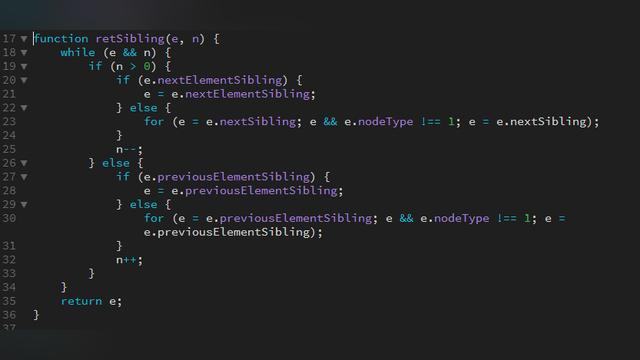JavaScript类型判断
类型判断在 web 开发中有非常广泛的应用,简单的有判断数字还是字符串,进阶一点的有判断数组还是对象,再进阶一点的有判断日期、正则、错误类型,再再进阶一点还有比如判断 plainObject、空对象、Window 对象等等。

typeof
我们最最常用的莫过于 typeof,注意,尽管我们会看到诸如:
console.log(typeof('yayu')) // string
的写法,但是 typeof 可是一个正宗的运算符,就跟加减乘除一样!这就能解释为什么下面这种写法也是可行的:
console.log(typeof 'yayu') // string
typeof 是一元操作符,放在其单个操作数的前面,操作数可以是任意类型。返回值为表示操作数类型的一个字符串。
那我们都知道,在 ES6 前,JAVAScript 共六种数据类型,分别是:
Undefined、Null、Boolean、Number、String、Object
然而当我们使用 typeof 对这些数据类型的值进行操作的时候,返回的结果却不是一一对应,分别是:
undefined、object、boolean、number、string、object
注意以上都是小写的字符串。Null 和 Object 类型都返回了 object 字符串。
尽管不能一一对应,但是 typeof 却能检测出函数类型:
function a() {}
console.log(typeof a); // function
所以 typeof 能检测出六种类型的值,但是,除此之外 Object 下还有很多细分的类型呐,如 Array、Function、Date、RegExp、Error 等。
如果用 typeof 去检测这些类型,举个例子:
var date = new Date();
var error = new Error();
var symbol = new Symbol('a');
console.log(typeof date); // object
console.log(typeof error); // object
console.log(typeof a); // symbol
返回的都是 object 呐,这可怎么区分~ 所以有没有更好的方法呢?
Object.prototype.toString
是的,当然有!这就是 Object.prototype.toString!
那 Object.protototype.toString 究竟是一个什么样的方法呢?上英文版:
When the toString method is called, the following steps are taken:
If the this value is undefined, return "[object Undefined]".
If the this value is null, return "[object Null]".
Let O be the result of calling ToObject passing the this value as the argument.
Let class be the value of the [[Class]] internal property of O.
Return the String value that is the result of concatenating the three Strings "[object ", class, and "]".
如果没有看懂,就不妨看看我理解的:
当 toString 方法被调用的时候,下面的步骤会被执行:
- 如果 this 值是 undefined,就返回 [object Undefined]
- 如果 this 的值是 null,就返回 [object Null]
- 让 O 成为 ToObject(this) 的结果
- 让 class 成为 O 的内部属性 [[Class]] 的值
- 最后返回由 "[object " 和 class 和 "]" 三个部分组成的字符串
通过规范,我们至少知道了调用 Object.prototype.toString 会返回一个由 "[object " 和 class 和 "]" 组成的字符串,而 class 是要判断的对象的内部属性。
console.log(Object.prototype.toString.call(undefined)) // [object Undefined]
console.log(Object.prototype.toString.call(null)) // [object Null]
var date = new Date();
console.log(Object.prototype.toString.call(date)) // [object Date]
var a = Symbol('a');
console.log(Object.prototype.toString.call(Symbol)) // [object Symbol]
正是因为这种特性,我们可以用 Object.prototype.toString 方法识别出更多类型!
那到底能识别多少种类型呢?
至少 12 种!
// 以下是11种:
var number = 1; // [object Number]
var string = '123'; // [object String]
var boolean = true; // [object Boolean]
var und = undefined; // [object Undefined]
var nul = null; // [object Null]
var obj = {a: 1} // [object Object]
var array = [1, 2, 3]; // [object Array]
var date = new Date(); // [object Date]
var error = new Error(); // [object Error]
var reg = /a/g; // [object RegExp]
var func = function a(){}; // [object Function]
function checkType() {
for (var i = 0; i < arguments.length; i++) {
console.log(Object.prototype.toString.call(arguments[i]))
}
}
checkType(number, string, boolean, und, nul, obj, array, date, error, reg, func)
除了以上 11 种之外,还有:
console.log(Object.prototype.toString.call(Math)); // [object Math]
console.log(Object.prototype.toString.call(JSON)); // [object JSON]
function a() {
console.log(Object.prototype.toString.call(arguments)); // [object Arguments]
}
a();
type API
既然有了 Object.prototype.toString 这个神器!那就让我们写个 type 函数帮助我们以后识别各种类型的值吧!
我的设想:
写一个 type 函数能检测各种类型的值,如果是基本类型,就使用 typeof,引用类型就使用 toString。此外鉴于 typeof 的结果是小写,我也希望所有的结果都是小写。
考虑到实际情况下并不会检测 Math 和 JSON,所以去掉这两个类型的检测。
我们来写一版代码:
// 第一版
var class2type = {};
// 生成class2type映射
"Boolean Number String Function Array Date RegExp Object Error Null Undefined".split(" ").map(function(item, index) {
class2type["[object " + item + "]"] = item.toLowerCase();
})
function type(obj) {
return typeof obj === "object" || typeof obj === "function" ?
class2type[Object.prototype.toString.call(obj)] || "object" :
typeof obj;
}
嗯,看起来很完美的样子~~ 但是注意,在 IE6 中,null 和 undefined 会被 Object.prototype.toString 识别成 [object Object]!
我去,竟然还有这个兼容性!有什么简单的方法可以解决吗?那我们再改写一版,绝对让你惊艳!
第二版
var class2type = {};
// 生成class2type映射
"Boolean Number String Function Array Date RegExp Object Error".split(" ").map(function(item, index) {
class2type["[object " + item + "]"] = item.toLowerCase();
})
function type(obj) {
// 一箭双雕
if (obj == null) {
return obj + "";
}
return typeof obj === "object" || typeof obj === "function" ?
class2type[Object.prototype.toString.call(obj)] || "object" :
typeof obj;
}
isFunction
有了 type 函数后,我们可以对常用的判断直接封装,比如 isFunction:
function isFunction(obj) {
return type(obj) === "function";
}
数组
jQuery 判断数组类型,旧版本是通过判断 Array.isArray 方法是否存在,如果存在就使用该方法,不存在就使用 type 函数。
var isArray = Array.isArray || function( obj ) {
return type(obj) === "array";
}
但是在 jQuery v3.0 中已经完全采用了 Array.isArray。
在上篇中,我们抄袭 jQuery 写了一个 type 函数,可以检测出常见的数据类型,然而在开发中还有更加复杂的判断,比如 plainObject、空对象、Window 对象等,这一篇就让我们接着抄袭 jQuery 去看一下这些类型的判断。
plainObject
plainObject 来自于 jQuery,可以翻译成纯粹的对象,所谓"纯粹的对象",就是该对象是通过 "{}" 或 "new Object" 创建的,该对象含有零个或者多个键值对。
之所以要判断是不是 plainObject,是为了跟其他的 JavaScript对象如 null,数组,宿主对象(documents)等作区分,因为这些用 typeof 都会返回object。
jQuery提供了 isPlainObject 方法进行判断,先让我们看看使用的效果:
function Person(name) {
this.name = name;
}
console.log($.isPlainObject({})) // true
console.log($.isPlainObject(new Object)) // true
console.log($.isPlainObject(Object.create(null))); // true
console.log($.isPlainObject(Object.assign({a: 1}, {b: 2}))); // true
console.log($.isPlainObject(new Person('yayu'))); // false
console.log($.isPlainObject(Object.create({}))); // false
由此我们可以看到,除了 {} 和 new Object 创建的之外,jQuery 认为一个没有原型的对象也是一个纯粹的对象。
实际上随着 jQuery 版本的提升,isPlainObject 的实现也在变化,我们今天讲的是 3.0 版本下的 isPlainObject,我们直接看源码:
// 上节中写 type 函数时,用来存放 toString 映射结果的对象
var class2type = {};
// 相当于 Object.prototype.toString
var toString = class2type.toString;
// 相当于 Object.prototype.hasOwnProperty
var hasOwn = class2type.hasOwnProperty;
function isPlainObject(obj) {
var proto, Ctor;
// 排除掉明显不是obj的以及一些宿主对象如Window
if (!obj || toString.call(obj) !== "[object Object]") {
return false;
}
/**
* getPrototypeOf es5 方法,获取 obj 的原型
* 以 new Object 创建的对象为例的话
* obj.__proto__ === Object.prototype
*/
proto = Object.getPrototypeOf(obj);
// 没有原型的对象是纯粹的,Object.create(null) 就在这里返回 true
if (!proto) {
return true;
}
/**
* 以下判断通过 new Object 方式创建的对象
* 判断 proto 是否有 constructor 属性,如果有就让 Ctor 的值为 proto.constructor
* 如果是 Object 函数创建的对象,Ctor 在这里就等于 Object 构造函数
*/
Ctor = hasOwn.call(proto, "constructor") && proto.constructor;
// 在这里判断 Ctor 构造函数是不是 Object 构造函数,用于区分自定义构造函数和 Object 构造函数
return typeof Ctor === "function" && hasOwn.toString.call(Ctor) === hasOwn.toString.call(Object);
}
注意:我们判断 Ctor 构造函数是不是 Object 构造函数,用的是 hasOwn.toString.call(Ctor),这个方法可不是 Object.prototype.toString,不信我们在函数里加上下面这两句话:
console.log(hasOwn.toString.call(Ctor)); // function Object() { [native code] }
console.log(Object.prototype.toString.call(Ctor)); // [object Function]
发现返回的值并不一样,这是因为 hasOwn.toString 调用的其实是 Function.prototype.toString,毕竟 hasOwnProperty 可是一个函数!
而且 Function 对象覆盖了从 Object 继承来的 Object.prototype.toString 方法。函数的 toString 方法会返回一个表示函数源代码的字符串。具体来说,包括 function关键字,形参列表,大括号,以及函数体中的内容
EmptyObject
jQuery提供了 isEmptyObject 方法来判断是否是空对象,代码简单,我们直接看源码:
function isEmptyObject(obj) {
var name;
for (name in obj) {
return false;
}
return true;
}
其实所谓的 isEmptyObject 就是判断是否有属性,for 循环一旦执行,就说明有属性,有属性就会返回 false。
但是根据这个源码我们可以看出isEmptyObject实际上判断的并不仅仅是空对象。
举个栗子:
console.log(isEmptyObject({})); // true
console.log(isEmptyObject([])); // true
console.log(isEmptyObject(null)); // true
console.log(isEmptyObject(undefined)); // true
console.log(isEmptyObject(1)); // true
console.log(isEmptyObject('')); // true
console.log(isEmptyObject(true)); // true
以上都会返回 true。
但是既然 jQuery 是这样写,可能是因为考虑到实际开发中 isEmptyObject 用来判断 {} 和 {a: 1} 是足够的吧。如果真的是只判断 {},完全可以结合上篇写的 type 函数筛选掉不适合的情况
Window对象
Window 对象作为客户端 JavaScript 的全局对象,它有一个 window 属性指向自身,这点在《JavaScript深入之变量对象》中讲到过。我们可以利用这个特性判断是否是 Window 对象。
function isWindow( obj ) {
return obj != null && obj === obj.window;
}
isArrayLike
isArrayLike,看名字可能会让我们觉得这是判断类数组对象的,其实不仅仅是这样,jQuery 实现的 isArrayLike,数组和类数组都会返回 true。
因为源码比较简单,我们直接看源码:
function isArrayLike(obj) {
// obj 必须有 length属性
var length = !!obj && "length" in obj && obj.length;
var typeRes = type(obj);
// 排除掉函数和 Window 对象
if (typeRes === "function" || isWindow(obj)) {
return false;
}
return typeRes === "array" || length === 0 ||
typeof length === "number" && length > 0 && (length - 1) in obj;
}
重点分析 return 这一行,使用了或语句,只要一个为 true,结果就返回 true。
所以如果 isArrayLike 返回true,至少要满足三个条件之一:
- 是数组
- 长度为 0
- lengths 属性是大于 0 的数字类型,并且obj[length - 1]必须存在
第一个就不说了,看第二个,为什么长度为 0 就可以直接判断为 true 呢?
那我们写个对象:
var obj = {a: 1, b: 2, length: 0}
isArrayLike 函数就会返回 true,那这个合理吗?
回答合不合理之前,我们先看一个例子:
function a(){
console.log(isArrayLike(arguments))
}
a();
如果我们去掉length === 0 这个判断,就会打印 false,然而我们都知道 arguments 是一个类数组对象,这里是应该返回 true 的。
所以是不是为了放过空的 arguments 时也放过了一些存在争议的对象呢?
第三个条件:length 是数字,并且 length > 0 且最后一个元素存在。
为什么仅仅要求最后一个元素存在呢?
让我们先想下数组是不是可以这样写:
var arr = [,,3]
var arrLike = {
2: 3,
length: 3
}
也就是说当我们在数组中用逗号直接跳过的时候,我们认为该元素是不存在的,类数组对象中也就不用写这个元素,但是最后一个元素是一定要写的,要不然 length 的长度就不会是最后一个元素的 key 值加 1。比如数组可以这样写
var arr = [1,,]; console.log(arr.length) // 2
但是类数组对象就只能写成:
var arrLike = {
0: 1,
length: 1
}
所以符合条件的类数组对象是一定存在最后一个元素的!
这就是满足 isArrayLike 的三个条件,其实除了 jQuery 之外,很多库都有对 isArrayLike 的实现,比如 underscore:
var MAX_ARRAY_INDEX = Math.pow(2, 53) - 1;
var isArrayLike = function(collection) {
var length = getLength(collection);
return typeof length == 'number' && length >= 0 && length <= MAX_ARRAY_INDEX;
};
isElement
isElement 判断是不是 DOM 元素。
isElement = function(obj) {
return !!(obj && obj.nodeType === 1);
};



















